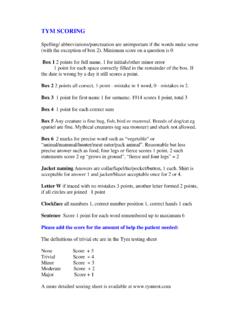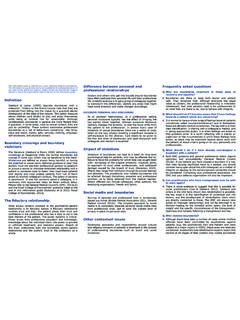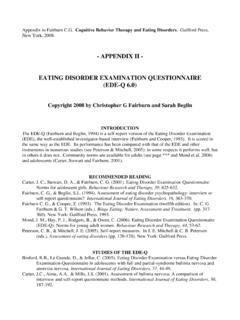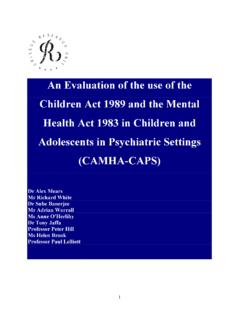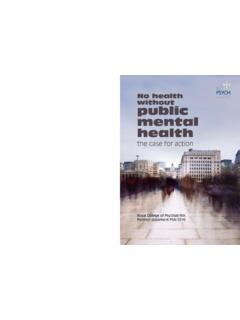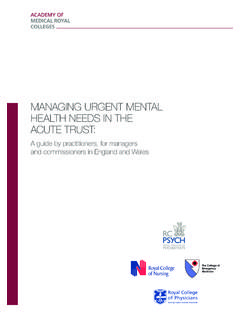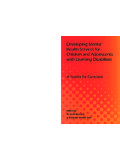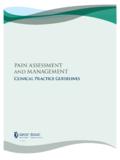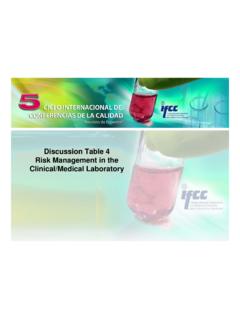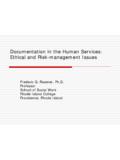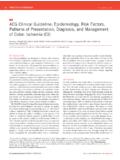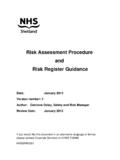Transcription of clinical risk assessment and management - Royal …
1 clinical risk assessment and management the critical role of formulation caroline logan & mike doyle headlines the role of formulation in assessing and managing harmful men and women is finally being realised but what do we mean by formulation? and where is the evidence that it makes any difference at all ..? background why formulation is under scrutiny what do we mean by formulation? where does it fit in to the management of harmful people? does formulation make any difference? Royal College of Psychiatrists (1996) assessment and clinical management of Risk of Harm to Other People, Council Report CR53 a formulation should be made based on risk factors and all other items of history and mental state the formulation should, so far as possible, specify factors likely to increase the risk of dangerous behaviour and those likely to decrease it case formulation background roots in application of psychological science to clinical problems (Tarrier & Calam, 2002) applies theory to make explanatory inferences about causes and maintaining factors that can inform interventions.
2 Formulation explicitly & centrally informs intervention behaviour analysis vs diagnosis focus on understanding and explanation empirical and scientific theme - link observations with theory, framework for intervention and monitoring of change Doyle and Dolan (2002) ..research on the value of risk analysis and formulation remains BUT evidence to suggest that formulations can improve understanding of individual problems and risk behaviour risk formulations may provide a crucial link between assessment and future research aimed at evaluating structured clinical judgement and risk formulation is required FORMULATION under scrutiny formulation underpins clinical practice personality disordered clients risk assessment and management FORMULATION what do we mean?
3 Organisational framework for producing (generally) a narrative that explains the underlying mechanism of the presenting problem and proposes hypotheses regarding action to facilitate change the purpose of case formulation organise mutual understanding connections intervention communication case formulation vs problem formulation risk formulation a kind of problem formulation clinical risk assessment the last 20 years formulae formulation unstructured risk assessment actuarial assessment structured professional judgement risk assessment is an estimation of an individual s risk potential based on our understanding of the balance between certain conditions that we assume to be risk factors and certain other conditions that we assume to be protective factors.
4 All of which have relevance to the harm potential of the client in question risk formulation risk management is the operationalisation of hypotheses derived from the risk formulation, the purpose of which is to prevent or limit potentially harmful outcomes, achieved by a combination of treatment, supervision and monitoring, and if relevant, victim safety-planning risk management plan SPJ in a nutshell structured professional judgement relevant factors FORMULATION risk management risk protective treatment monitoring supervision victim safety planning tools mainly help HERE feedback ensures dynamic process risk of what? Royal College of Psychiatrists (1996) assessment and clinical management of Risk of Harm to Other People, Council Report CR53 the formulation should aim to answer the following questions: how serious is the risk?
5 Is the risk specific or general? how immediate is the risk? how volatile is the risk? what specific treatment, and which management plan, can best reduce the risk? treatment treatment (or rehabilitation) strategies designed to moderate risk factors or enhance protective factors interventions intended to repair or restore deficits in adjustment and functioning supervision restrictions on activity, movement, association, or communication that are intended to control risk factors limits on opportunity to be harmful enhancements to lifestyle in the form of structure, boundaries, role expectations intended to enhance protective factors monitoring the identification of those early warning signs that are an indication of a relapse to harmful behaviour any indicators of a change in risk victim safety plan guidance to past or future possible victims to help them avoid or to reduce the impact of (re-)
6 Victimisation the purpose of case formulation organise mutual understanding connections intervention communication ABC formulation behavioural-functional analysis Haynes & O Brien, 1990 antecedents argument with daughter wife late back from work behaviour attack wife with a knife consequence arrested locked up guilt anxiety organising information (i) ABC: cognitive-behavioural analysis after Chadwick et al. 1997 antecedent critical incidents: argument with daughter activating events: wife late back from work beliefs & thoughts appraisals of antecedents: my wife is late so she is up to something there is a widespread conspiracy/black mass she is a witch, I am at risk if I don t do something soon I am doomed consequences physical: tense, nervous, irritable, agitated emotional: fearful, angry behavioural: confront wife, attack wife with knife early experiences bio-psychosocial vulnerabilities conditional beliefs schemata A - critical incidents B - beliefs and thoughts C- consequences.
7 Uses the developmental history and several prototypical situation-thought-emotion-behaviour situations to enable the therapist to infer core beliefs, dysfunctional assumptions, and maladaptive compensatory (Kuyken et al. 2005) ..specific approaches are used to elucidate inter personal and unconscious processes, for example attention to transference and counter (Summers & Martindale 2013) importance of early development problem predisposing factors the 5 Ps of formulation protective factors precipitating factors perpetuating factors vulnerability factors triggers maintenance factors organising information (ii) (Weerasekera, 1996) or motivators, factors that increase the perceived benefits or rewards of harmful behaviour , profit, honor, release, expression, status factors that decrease the perceived costs or negative consequences of harmful behaviour , lack of empathy, negative attitudes, lack of insight, lack of guilt or anxiety factors that disturb a person s ability to monitor and control their decision-making , impaired reasoning, racing thoughts, impaired problem-solving or reasoning organising information (iii)
8 Drivers disinhibitors destabilisers the 3 Ds of formulation drivers or motivators factors that increase the perceived likelihood of gains or benefits of harmful behaviour , the satisfaction of revenge what was the client trying to accomplish by being harmful in the past? which factors increased the perceives gains or benefits of harmful behaviour? , perceived rewards of violence defence distance justice honour gain profit control change status esteem release expression arousal activity proximity affiliation from Douglas et al, 2013 once organised .. decision theory why has the client decided to be harmful before? why might he or she do so again? (a) entertained notion of harm - and not dismissed (b) positive consequences were identified (c) negative consequences acceptable (d) options for being harmful were/are feasible once organised.
9 Decision theory why has the client decided to be harmful before? why might he or she do so again? scenario planning under what circumstances might he or she decide to be harmful again? SPJ in a nutshell structured professional judgement relevant factors FORMULATION risk management risk protective treatment monitoring supervision victim safety planning risk of what? FORMULATION where does it fit in? challenge to demonstrate that the process of formulation improves the quality and efficacy of risk management with harmful clients re. Hart, S. et al. (2011). Forensic case formulation. International Journal of Forensic Mental Health, 10, 118-28. if we can identify the common features of formulations, we can create a framework for evaluation that will help us move from the art to the science of formulation (the formulation checklist ) common features of formulations narrative the degree to which the formulation is presented in everyday language that tells a coherent, ordered and meaningful story re.
10 Hart, S. et al. (2011). Forensic case formulation. International Journal of Forensic Mental Health, 10, 118-28. common features of formulations external coherence the extent to which the formulation is explicitly consistent with an empirically supported psychosocial theory of criminal behaviour re. Hart, S. et al. (2011). Forensic case formulation. International Journal of Forensic Mental Health, 10, 118-28. common features of formulations factual foundation the extent to which the formulation is based on information about the case that is adequate in terms of quantity and quality re. Hart, S. et al. (2011). Forensic case formulation. International Journal of Forensic Mental Health, 10, 118-28. common features of formulations internal coherence the extent to which the formulation rests on propositions or makes assumptions that are compatible or non-contradictory re.

